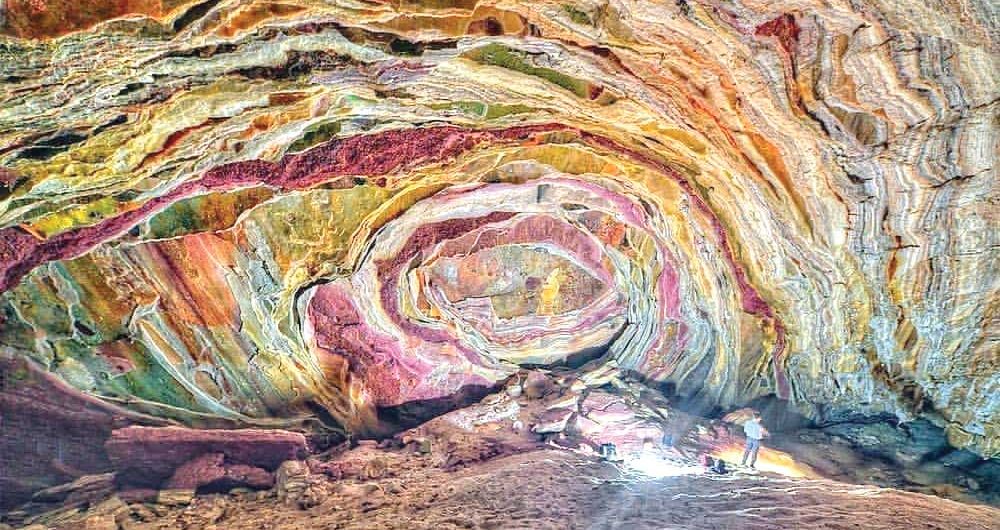Namakdan cave
The longest salt cave in the world, called Namkadan, is located 90 km on the island of Qeshm, 237 meters above sea level. At the bottom of the cave you can see currents of salt water, creating a magnificent sight for visitors.
The humidity of the island and the infiltration of water in the caves cause the saturated salt water to flow over the body of the natural chandeliers, constantly forming them. This flow of water in the heart of Namakdan Mountain is a permanent underground flow that, on the other side of the cave, opens to another outlet.
At the entrance of the cave there is a natural white basin, where the cave water accumulates, and appears as a salt spring on the mountainside. Sometimes the salty water in the cave reflects images like a mirror, creating a beautiful and unique sight. The main bed of this cave is red. The sediments that have formed in this area contain iron oxide compounds, especially hematite. The ceiling of the cave has a beautiful structure and is covered with salt crystal lamps in different shapes.
The importance of the Namakdan cave is due to the medicinal properties of its salt, which contains magnesium and dates back more than 570 million years.
In the past, salts were in the form of layers that formed over time and, due to their buoyancy and because their volumetric weight is less than that of the surrounding rocks, they pushed them sideways and moved upwards.
If you are passionate about caves, mountains, hiking, mountaineering, historical landscapes and fascinating culture of the Middle East, SITO Travel will help you organize your trip to Iran. Get in touch with us because our experience is born and developed in this field.



Comments